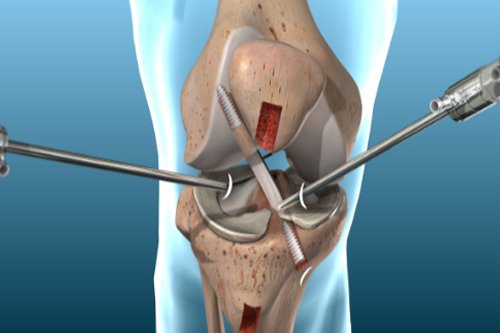
Dr. Sanjay Barik
Knee & Shoulder Surgeon
Meet Our Doctor

Dr. Sanjay Barik
Orthopedic and Joint Replacement Surgeon
Dr. Barik's Orthocare Clinic
- MBBS
- MS - Orthopaedics
ACL Surgery With Internal Brace In Adilabad
New research (read here) by Sanjay Barik MS shows that there is an 88% reduction in re-injury or re-rupture rates following ACL Internal Brace reconstructive surgery at a two years. Among patients who have had the traditional ACL reconstruction, this rate would be about 10-15%.
The Internal Brace is for both the chronic or acute cases and will the optimise outcomes regardless of how the serious ligament injury is. ACL Repair with Internal Brace is the excellent and we now routinely combine this with Anterolateral Ligament (ALL) Internal Brace for extra protection.
This is combined with stump preservation or the use of a reduced size patellar tendon graft. In the selected cases though the direct repair may still be the possible.
This combined the ACL plus Anterolateral Ligament (ALL) reconstruction with the Internal Bracing augmentation offers the great results that reduce the risk of the re-injury and accelerate recovery.

What is ACL repair with Internal Brace?
ACL (Anterior Cruciate Ligament) repair with Internal Brace is a surgical technique used to repair a torn ACL in the knee. The procedure involves reinforcing the repaired ligament with a strong, synthetic material (internal brace) to provide additional support during the healing process. Here are the key components and steps of the procedure:
ACL Tear: The ACL is one of the key ligaments in the knee that helps stabilize the joint. An ACL tear can result from sports injuries, accidents, or other trauma, leading to knee instability.
Traditional ACL Reconstruction: Traditionally, a torn ACL is reconstructed using a graft taken from another part of the patient’s body (autograft) or from a donor (allograft). The graft replaces the damaged ligament.
ACL Repair: Instead of replacing the torn ligament, ACL repair aims to reattach the torn ends of the ligament. This approach can be less invasive and may preserve the natural tissue, potentially leading to quicker recovery and fewer complications.
Internal Brace: The internal brace is a strong, synthetic tape or fiber that is used to reinforce the repaired ligament. It provides additional support and stability to the knee during the healing process. The internal brace is typically made from a biocompatible material that is designed to integrate with the body’s tissues.
Internal Bracing of the Anterolateral Ligament
While the widespread adoption of the Internal Brace technology is the revolutionising the treatment of the ligament injuries, it is by no means the only major clinical advance in this area. However, the one technique in the particular is the working particularly well when used in conjunction with the Internal Brace.
A few years ago, after studying 48 knee joints from human cadavers over three years, Belgian knee surgeons Dr Sanjay Barik announced the existence of a “new” ligament. The incredibly thin the 4cm-long anterolateral ligament (ALL) runs up the outside of the knee, while the anterior cruciate ligament (ACL) runs through the knee from the shin to the back of a thigh. It is this ALL ligament, it appears, which provides the knee with the good deal of its stability.
If the ALL has also been ruptured, which happens frequently during the ACL rupture, an extra ligament and Internal Brace replacing the torn ALL can be attached to the outside of the knee by the way of screws drilled into the bone below and above the joint. The strengthening and replacement of the ALL has proved to be the key to stabilising the knee after the ACL reconstruction, and is the valuable technique which can be used in conjunction with an Internal Brace to provide even greater strength or stability for the reconstructed knee.


